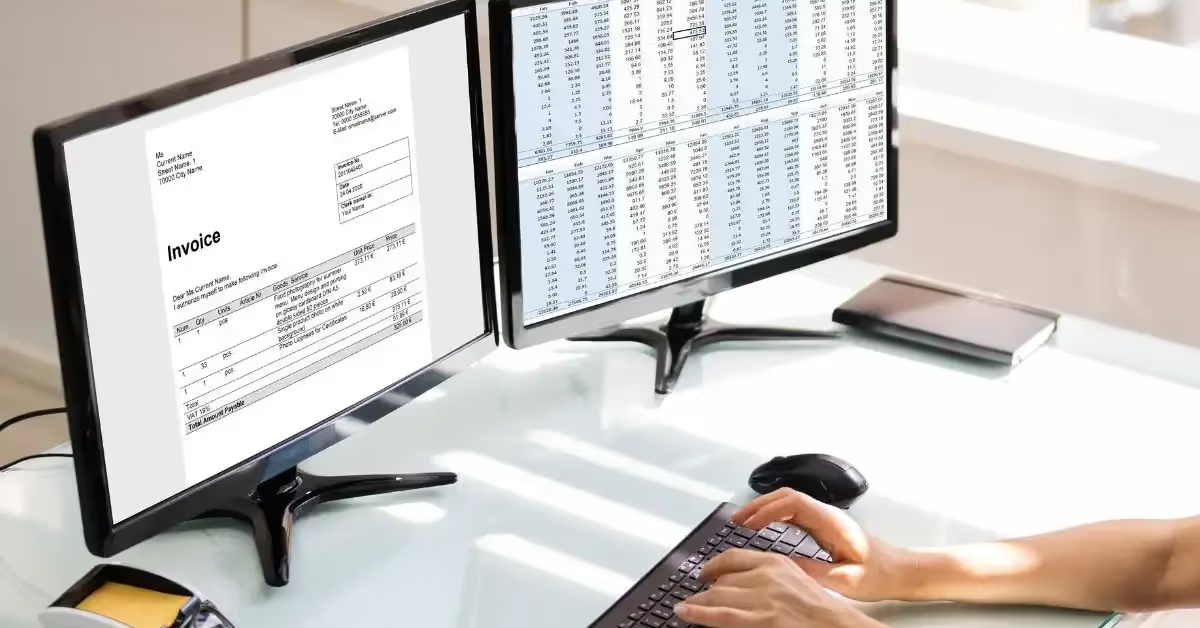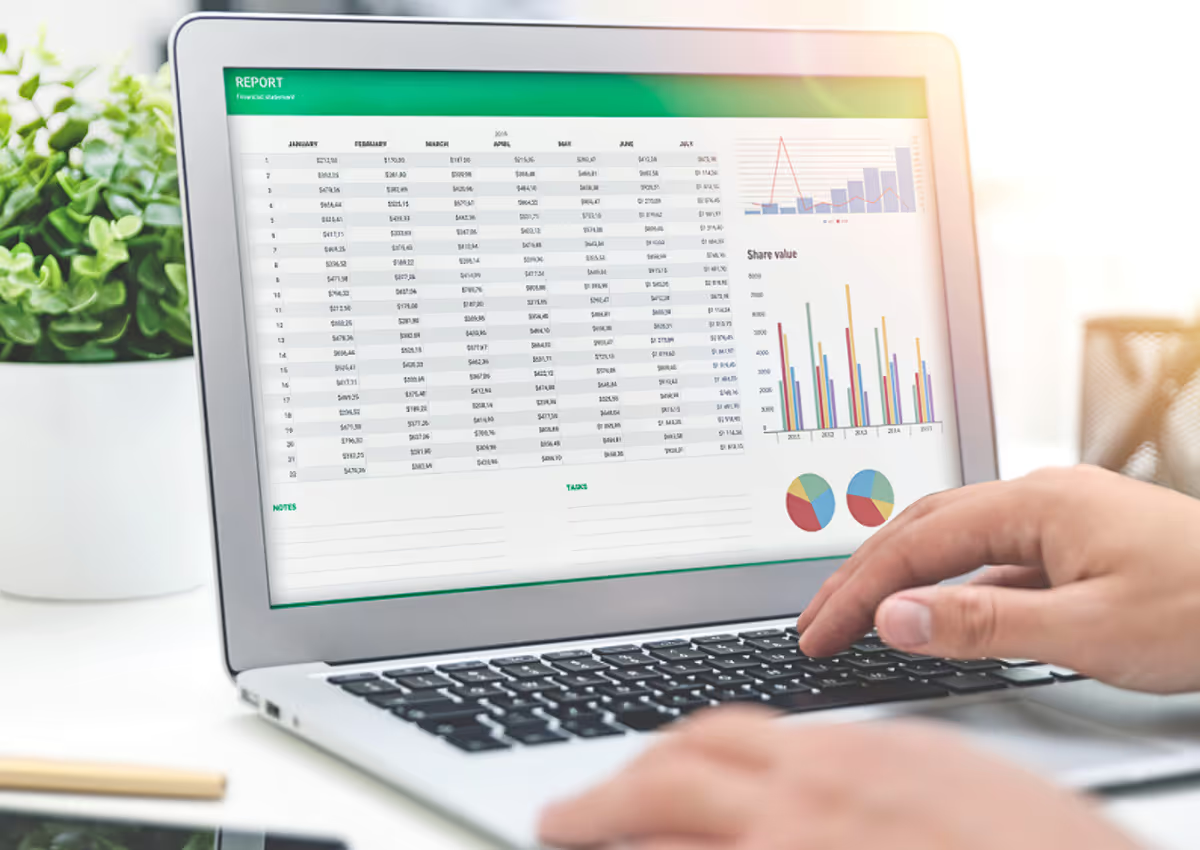Accounts receivable aging reports: Benefits and how to create them
Gain valuable financial insights, streamline collections, and forecast cash flow for your business. Learn how to leverage accounts receivable aging reports.

Imagine having a bird's-eye view of all those pesky outstanding invoices your customers owe you. That's exactly what the accounts receivable aging report does. It cleverly organizes those payments based on their due dates, breaking them down into neat time buckets like 30, 60, 90 days, and beyond.
But why is this report such a game-changer? By analyzing it, accountants gain some serious superpowers! You'll be able to spot those sneaky payment patterns, prioritize your collections efforts like a pro, and even predict your cash flow like a financial clairvoyant. Embracing the potential of this report will streamline your accounting processes like never before.
What is an accounts receivable aging report?
An accounts receivable aging report is a tool businesses use to keep track of outstanding customer payments. It helps businesses stay on top of who owes them money and for how long. The report categorizes all those outstanding invoices based on how long they've been outstanding. So, with just a glance, you can identify who's paying up on time and who's a bit slow on the uptake.
It's not just about keeping track of your hard-earned money. This report also saves the day by spotting potential financial troubles on the horizon. Trust us, early detection is key, and this report helps you dodge those nasty bad debts before they become an issue.

How do accounts receivable aging reports work?
An accounts receivable aging report works like a money tracker for businesses. It lists all the customers who owe them money and shows how long it's been since the payment was due. This helps businesses know who hasn't paid yet and if anyone is running late on payments.
Picture it like sorting your to-do list into time buckets - 30, 60, 90 days, or longer. These categories help accountants see which payments are getting a bit dusty and need some attention, so they can focus on collecting those funds.
Why is this report important?
The report plays a pivotal role in helping accountants simplify and automate their work processes. Here are the key reasons why it is important:
- Identify overdue payments: The report enables accountants to identify unpaid invoices promptly, reducing the risk of late payments and improving cash flow management.1
- Prioritize collections: By categorizing invoices based on their age, accountants can prioritize collections efforts, focusing on older outstanding payments that require immediate attention.
- Mitigate bad debt: Through regular monitoring of the aging report, accountants can detect potential bad debt and take necessary actions to mitigate financial losses.2
- Forecast cash flow: Analyzing the report helps accountants forecast future cash flow, allowing businesses to plan for upcoming financial obligations and make informed decisions.
Potential downsides
While the accounts receivable aging report is a valuable tool, it's important to consider potential downsides, including:
- Reliance on accurate data: The report depends on precise and timely data entry. Incomplete or incorrect info can mess up aging categories and insights.3
- Limited historical context: The report lacks historical context, focusing on current invoices only. It might not show a client's full payment behavior history.
- Subjectivity: Aging periods in the report are subjective, varying with business needs. Different periods can give diverse interpretations of accounts receivable aging.
Alternatives to an accounts receivable aging report
There are other ways to manage accounts receivable effectively. Some common alternatives include:
- Cash flow forecasting tools: Cash flow forecasting tools project inflows and outflows, giving a complete view beyond aging invoices.
- Customer relationship management (CRM) systems: CRM systems often include features for tracking customer payment histories and managing collections.
- Automated payment reminders: Using automated software or services, businesses can send timely payment reminders to clients, reducing the need for manual tracking.
- Factoring: In some cases, businesses may choose to sell their accounts receivable to a third-party company, which then assumes the responsibility of collecting payments.
Required data for accounts receivable aging reports
To create accurate and insightful accounts receivable aging reports, you'll need the following data:
- Invoice information: Gather details about each invoice, including invoice number, customer name, invoice date, due date, and total amount.
- Payment information: Record payment information, such as payment date, payment amount, and payment method for each invoice.
- Customer details: Collect relevant customer information, such as customer name, contact information, and any specific customer identifiers.
- Invoice aging periods: Customize aging periods for categorizing outstanding invoices: 30, 60, 90, or 120+ days. Accurate data storage in your accounting system ensures reliable reports.
How to create an accounts receivable aging report
To craft an aging report in accounts receivable, follow these steps:
- Gather data: Compile all the necessary data, including invoice information, payment information, customer details, and aging periods.
- Calculate: Calculate the outstanding balances for each aging period by summing up the total amounts of invoices within each category.
- Apply formatting: Format the report using markdown or your preferred formatting method. Use bold text or heading formatting to distinguish aging periods and important sections.
- Review and validate: Double-check the report for accuracy and ensure all data is correctly categorized.
- Generate the report: Generate the accounts receivable aging report using your accounting software or create it manually using a spreadsheet or document.
- Update regularly: Update the report periodically to reflect new invoices, payments, and changes in aging periods.
- Take action: Utilize the insights from the report to take proactive measures. Adjust credit terms, communicate with clients, or consider involving a collections agency for more challenging cases.
Types of accounts receivable aging reports
There are two main types of accounts receivable aging reports:
Summary aging report
This report provides a summarized view of the outstanding invoices across different aging periods. It shows the total amounts due for each period, allowing you to assess the overall status of your accounts receivable.
Example:
- 0-30 days: $XX,XXX
- 31-60 days: $XX,XXX
- 61-90 days: $XX,XXX
- 90+ days: $XX,XXX
Detailed aging report
The detailed aging report provides a thorough breakdown of outstanding invoices, organized by aging period. It includes specific invoice information like numbers, customer names, due dates, and amounts.
Example:
- 0-30 days:
- Invoice #12345 - Customer A - Due Date: XX/XX/XXXX - Amount: $XXX
- Invoice #67890 - Customer B - Due Date: XX/XX/XXXX - Amount: $XXX
- 31-60 days:
- Invoice #23456 - Customer C - Due Date: XX/XX/XXXX - Amount: $XXX
- Invoice #78901 - Customer D - Due Date: XX/XX/XXXX - Amount: $XXX
Frequently asked questions
How frequently should I generate an accounts receivable aging report?
The frequency of generating the report depends on the size and nature of your business. However, it is generally recommended to generate the report on a monthly basis to ensure timely identification of overdue payments and effective collections management.
Can the report help me detect potential bad debt?
Yes, the report can assist in the early detection of potential bad debt. By analyzing the aging categories and identifying clients with consistently delayed payments, you can take proactive measures to mitigate the risk of bad debt.
Can I generate the accounts receivable aging report automatically using accounting software?
Yes, many accounting software systems offer automated report generation. By setting up the appropriate parameters and scheduling, you can generate the report with ease, saving time and effort.
How can the accounts receivable aging report help with forecasting cash flow?
By analyzing the report's data, you can gain insights into expected payments and identify potential cash flow issues in advance. This enables you to make more accurate cash flow projections and plan accordingly.
Sources:
- Martin, M. (2015, July 28). Accounts Receivable: What Small Businesses Need to Know. Business News Daily; businessnewsdaily.com. https://www.businessnewsdaily.com/8229-accounts-receivable.html
- TUOVILA, A. (2019). Accounts Receivable Aging Definition. Investopedia. https://www.investopedia.com/terms/a/accounts-receivable-aging.asp
- Accounts Receivable Aging. (n.d.). Corporate Finance Institute. https://corporatefinanceinstitute.com/resources/accounting/accounts-receivable-aging/

